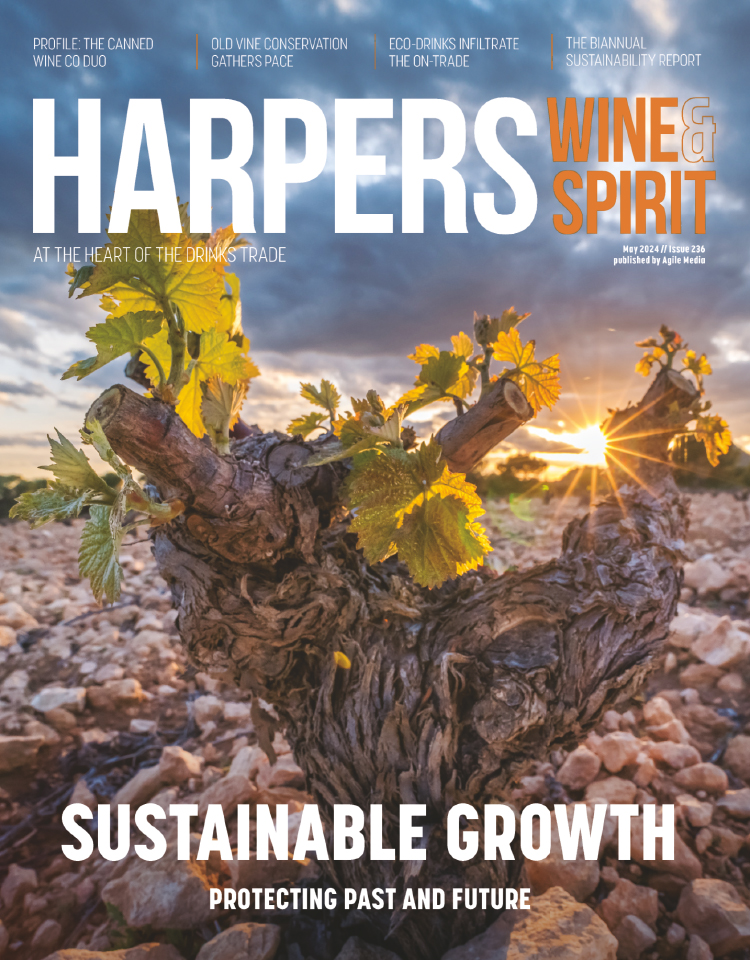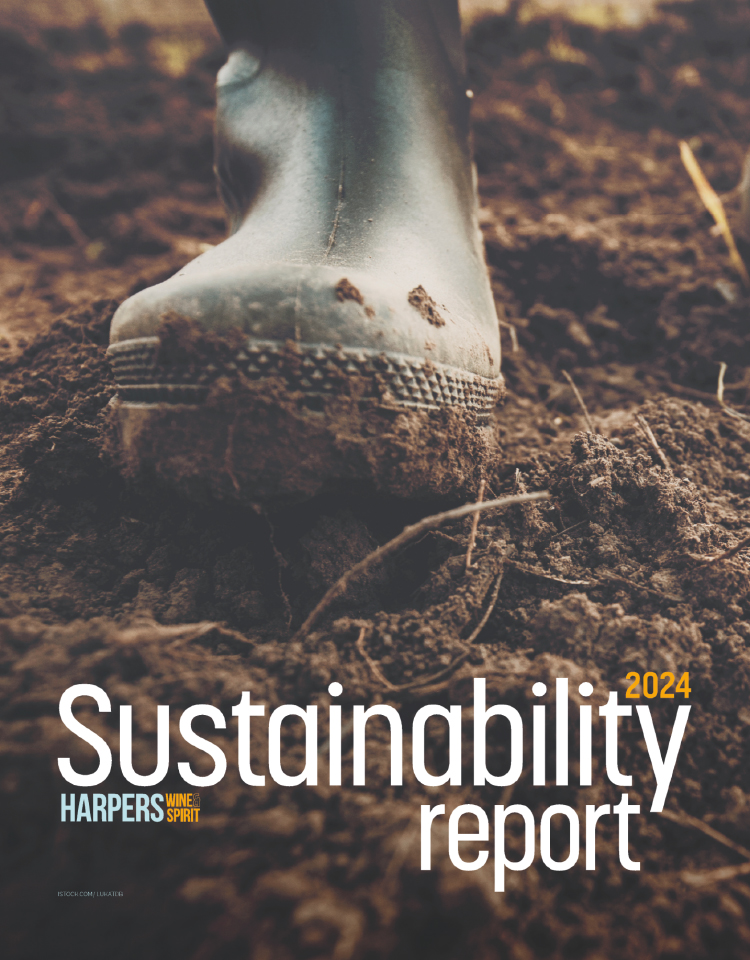
Round Table: Low & no
In partnership with Wild Idol and Spirits of Virtue
Premium low & no alcohol drinks are increasingly a ‘must list’ for businesses looking to maximise revenue, as Harpers’ recent panel revealed. Andrew Catchpole reports.
Panellists
Chris Appleby, buyer international and domestic, Enotria&Coe
Davide Segat, bar manager, The NoMad Hotel
Stephanie Robertson, head of customer engagement, Compass Group
Bryony Wilkinson, buyer, Marks & Spencer
Paul Beavis, CEO, Wild Idol
Roddy Nicoll, MD, Spirits of Virtue
Angela Mount, drinks consultant
Blake Gladman, strategy & insight director, KAM
Andrew Catchpole, moderator and editor, Harpers Wine & Spirit
What are the driving forces behind the rise in premium low & no?
Davide Segat: The new generation and those looking more to their health. They want options. Historically the options were always overly sweet, sugary juices and now people are more articulate about what they want, so they want something more special. We’re seeing more and more demand for low & no, and generally it has improved from a little corner of the menu to people actually wanting to see us feature drinks and creating in the same way as we do with alcohol.
Stephanie Robertson: With corporate catering, with lunchtime and dinners within the workplace, we’ve found a lot of our clients are not allowing alcohol on-site at all. So it’s very much that link into the ‘no’ space. We are seeing a trend where people are saying, “we’ll have one glass of Champagne or English sparkling, but then we want one glass of something else, but which still feels as special”. They don’t want to hold a can of Coke and look like a small child.
Blake Gladman: There’s two elements from the research we’ve done. One is health and wellness around the drink itself, but it’s also around people having other things going on in their lives. For example, they want to go to the gym the next morning, or they might have young children, or other things they want to do and they don’t want alcohol to get in the way.
Bryony Wilkinson: It’s the mental health aspects as well, the impact when you have alcohol, how it makes you feel the next day and how capable you are in living a good, balanced, happy life. We definitely have had that feedback from our customers.
How much is this a generational thing?
Paul Beavis: From experience, it’s not just the younger demographic [embracing low & no], it’s actually all the way through – anybody within a drinking repertoire who wants to be healthier. So that’s quite nice, it’s a bit buzzy, I think there’s a real balance across the generations.
Chris Appleby: There’s an acceptance by the older generation in moderating now… to go out and drink non-alcoholic drinks on a night out. There is definitely a perception change. And that folds into the availability for people in that premium space, where they feel comfortable that the drink they’re choosing is delivering on experience.
Can the social experience match that of a night with alcohol?
DS: Yes, people are discovering you can have a night out, have that emotional connection, without paying the price the next day.
SR: What underpins that is the quality of the drink. If you are saying to someone, “have a shot of water”’ it would effectively be doing the ritual, but it’s not giving you the same experience, you’re compromising, so it’s absolutely down to the quality of the liquid.
Roddy Nicoll: It has a lot to do with the environment. I have kids at uni and they have quiet halls there that don’t encourage any alcohol, and they just don’t show that much interest. Beyond the trade, all the things that drive trends, things like movies, TV, radio, are not really part of the tropes that [young people] see, that they want to replicate as part of the growing-up process. But they are still looking for something experiential, on a premium level, so they feel special afterwards and that is where the opportunity is.
What styles of drink are most gaining ground?
BG: Certainly for the older groups it’s about replicating that same experience you would have if it’s a spirit, served in the same way, with a similar flavour profile. And that’s where, in the past, people would be more likely to default to drinking alcohol, because they didn’t want to be seen holding a Coke or an orange juice. But with the younger generation, they don’t have that kind of heritage with their drinking, so you don’t have that sort of placebo replication. If you’re not used to drinking beer or wine or spirits, why would you then choose to have a low-alcohol version? It doesn’t really make as much sense to you. So that’s where there’s an interesting space with the young generation – they haven’t got a frame of reference centred mainly on alcoholic drinks.
BW: It’s the creativity of it. It’s not just about wanting a G&T. It’s about cocktail-like drinks… around experience, like finding interesting food, different combinations. I think you can do the same with different drinks, so they don’t have to have the alcohol in there. Particularly in the on-trade, when it’s beautifully presented, and looks exactly as it would if you have [an alcoholic] cocktail – that’s perfect and meets that need, whether you are older or younger.
We hear a lot about younger generations eschewing alcohol altogether. Is this a longer-term trend?
BG: I think it’s certainly not abstention, it’s moderation. And it’s just about picking the right moment rather than always going out and just drinking. With my generation, you just went out all the time, because it was all you had to do. Whereas there’s so much more to do now that you’re a bit like, “I’m wasting my time if I’m just drinking alcohol.”
BW: What’s interesting about moderation is we see our customers that buy into our low & no products also have alcohol in the basket at the same time. By and large, our customers are thinking about reducing their intake, rather than it being, “I’m just totally done with it.”Is ‘no’ winning out over ‘low’?
- Read more: Master of Malt partners with Sainsbury's
PB: It was low & no initially as a category, but now it seems to be segmented into the two, and the feedback I’ve had from thousands of tastings has been, “I get no, but I don’t really understand low as much.” I think it is down to the customer’s choice in terms of why they are avoiding alcohol – ultimately, low still has alcohol in it. So, if you’re going to have less of it, there is more weight behind the no alcohol category right now. What supports that is the quality of product has got better and better as technologies improve. And we’re in the premium space for no alcohol, so we are building a category. You have to be confident, explain what our brands deliver, and how they are made, and why they are priced as they are. And people trust that more and more.
RN: Our company is young, six years old, but when we entered the market a lot of people jumped in and thought it would be easy. When you drill down to what is successful, production methods are evolving, the benchmark is completely different now. The physicality of alcohol isn’t what people want [flavour-wise]… it’s moving through and now it’s a lot to do with the quality of the product.
So what of pricing and positioning?
BW: There needs to be more understanding about quality, about how something is made, because people ask, “why am I paying for this when I could buy alcohol for the same price?” But it’s getting there, because it’s being talked about more in the media, in the trade and it’s helping people understand that these drinks are not just flavoured water. There are some really complex production methods and ingredients that have to be used because you are making up for the fact that there is no alcohol in it. To be credible, it’s about getting out there with the authenticity of the drinks that are available, the craftsmanship that goes in, rather than it being just a ‘soft drink’.
BG: From a KAM study last year, most consumers said they would prefer to have non-alcoholic as a standalone section in the supermarkets. People actually want to shop that as a standalone category, and choose by looking at diverse options available.
SR: Absolutely, and it’s a wholly under-tapped market. If you don’t have a low & no list in your restaurant, shop or corporate space, you’re missing out on the pounds. I have built a low & no list with lots of different products – it’s really important. We’re saying, “let’s actually change it up and be fresh and exciting.”
DS: For us, it’s very similar. Years ago, we started with a couple of options, just to have the low & no option. And now we react to consumers, we have a section that has grown, that they study, and they spend on, so we build the low & no list the same as we build the spirit list.
A healthy 0% taster
Wild Idol
Wild Idol Naturally Alcohol-Free Sparkling Rosé
RRP £30
Twilight pink in the glass, with delicate bubbles and abundant in fresh, aromatic fruit notes.
Wild Idol Naturally Alcohol-Free Sparkling White
RRP £30
Pale-straw hued, bursting with zesty green apples, white peach and honeyed melon aromas, finishing with soft, fine bubbles.
Spirits of Virtue
Glen Dochus Highland Blend
RRP £18.99
Elegant and fragrant, with aromatic notes of sweet cigar-box smoke, nutmeg, candied lemon peel and dried figs.
Seven Giants Reposado Style
RRP £21.99
Deep in flavour, spicy and peppery, yet with an intriguing bittersweet savoury edge.
Pearsons Botanicals Rhubarb & Ginger
RRP £18.99
Exuding fruity, punchy spiciness, balancing gentle sweetness with the tart freshness of Yorkshire rhubarb.
Pearsons Botanicals White Grapefruit & Lemongrass
RRP £18.99
Uplifting, vibrant notes of Israeli white grapefruit, Indian lemongrass and a lingering citrus tang.
270° Botanicals Dark Caribbean Blend
RRP £21.99
Bursting with exotic scents, including Madagascan vanilla, Caribbean molasses and hints of Colombian coffee.
SOBOUR Bourbonesque
RRP £21.99
Smooth and indulgent, with the intensity of American dried fruits, the sweetness of Texan honey and a hint of jalapeno heat.
USKO Nordic Berries
RRP £19.99
Bright, refreshing and healthy, with a base of lingonberries, cranberries, sea buckthorn and bilberries.
Photography by David Rowland www.davidrowland.photo









